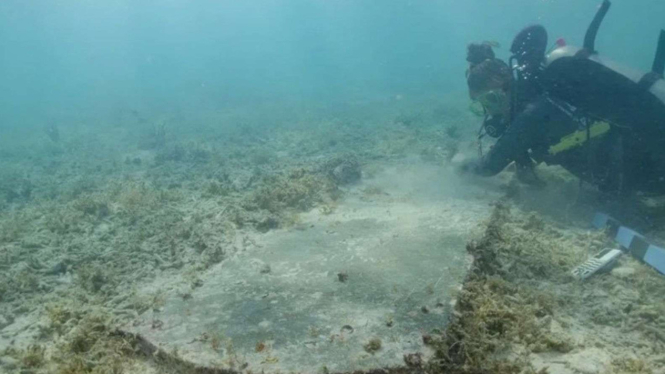The Discovery of Underwater Hospital and Cemetery in Florida
Senin, 8 Mei 2023 - 16:30 WIB
Sumber :
- IFL Science
VIVA – Divers at the Dry Tortugas National Park near Key West, Florida, the United States discover a 19th-century hospital and cemetery underwater.
The cemetery and hospital, which has a horror feel to it, dates back to the 19th century. In its time, the hospital was used to quarantine yellow fever patients that broke out between 1890 and 1900, while the cemetery was also for those who didn't survive.
The building used to be on the mainland, but climate change and storms made the island disappear into the waves.
Rumah Sakit dan Kuburan di Bawah Laut
Photo :
- IFL Science
Baca Juga :
Donald Trump Nyoblos di Florida
As known, the quarantine hospital was used to isolate and treat yellow fever patients from Fort Jefferson on the nearby island of Garden Key.
Fort Jefferson is one of the largest 19th-century forts in America and was originally occupied by the US Army to protect shipping lanes between the Gulf of Mexico and the Florida Straits.
Due to its geographical location, the area was not only ideal for protection but also served as a harbor for passing ships to replenish supplies or shelter from storms.
During the American Civil War, the fort was used as a military prison. In addition, the fort also served as a coal filling station for warships and the surrounding island was used for various purposes such as lighthouses, hospitals, and army training.
Over the years, the fort's population grew from the military, prisoners, slaves, engineers, and support staff, as well as laborers and their families. As the population grew, so did the risk of disease. Yellow fever, transmitted through mosquito bites, in particular, was a big problem.
There were several severe outbreaks of the disease, killing dozens of people during the 1860s and 1870s. As space was limited, the surrounding islands were used for quarantine hospitals, which were often makeshift. Nevertheless, the existence of these hospitals helped reduce the transmission of yellow fever and saved lives.
Many of these hospitals fell out of use when the military left the fort in 1873. Some continued to function when the US Marine Hospital Service took over the area between 1890 and 1900.
From historical records, dozens of people who were mostly soldiers from the fort were buried in graves that were later submerged. So far, scientists have identified only one grave, that of a civilian named John Greer who was employed there and died in November 1861.
"This exciting discovery highlights the potential for untold stories in Dry Tortugas National Park, both above and below the water," said maritime archaeologist for the South Florida national park, Josh Marano.
The hospital and cemetery have now been identified as archaeological resources and are being monitored by the South Florida National Park Cultural Resources Program.

2 Mayat Ditemukan di Roda Pesawat Setelah Mendarat di Florida
Dua mayat ditemukan di kompartemen roda pendaratan pesawat JetBlue setelah penerbangan dari New York ke Florida.
VIVA.co.id
8 Januari 2025





















